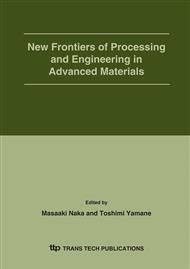p.3
p.7
p.13
p.21
p.27
p.33
p.39
p.45
p.51
Atomistic Computer Modeling of Intermetallic Alloys
Abstract:
The paper gives a brief overview of our recent work on atomistic computer modeling of ordered intermetallic compounds of the Ni-Al and Ti-Al systems. Atomic interactions in these systems are modeled by semi-empirical potentials fit to experimental and first-principles data. The methodology includes a large variety of techniques ranging from harmonic lattice dynamics to molecular dynamics and Monte Carlo simulations. The properties studied include lattice characteristics (elastic constants, phonons, thermal expansion), point-defect properties, atomic diffusion, generalized stacking faults, dislocations, surfaces, grain boundaries, interphase boundaries, and phase diagrams. We especially emphasize the recent progress in the understanding of diffusion mechanisms in NiAl and TiAl, calculation of stacking fault energies in Ni3Al in relation to dislocation behavior, and calculations of / 0 interface boundaries in Ni-Al alloys.
Info:
Periodical:
Pages:
21-26
Citation:
Online since:
December 2005
Authors:
Price:
Сopyright:
© 2005 Trans Tech Publications Ltd. All Rights Reserved
Share:
Citation:


